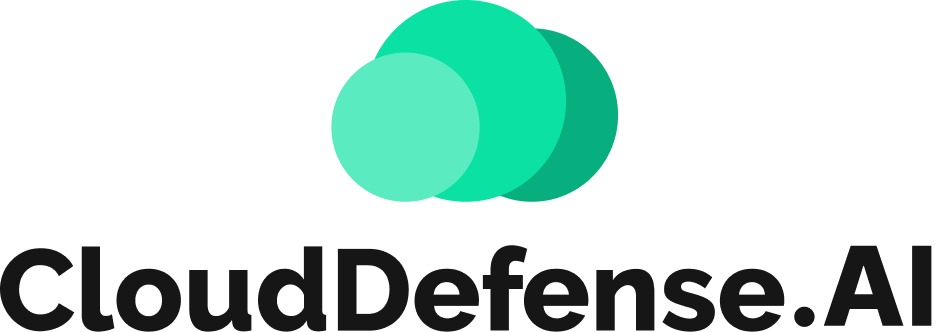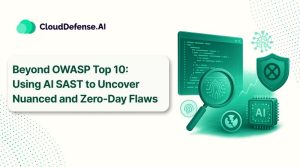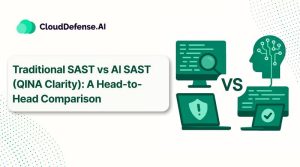What is Serverless Architecture?
Serverless architecture is a modern way of running applications in the cloud without having to manage servers because the cloud provider takes care of them. This means you, as the developer, don’t have to worry about provisioning, scaling, or maintaining servers.
You simply write and deploy your code, and the cloud provider takes care of the rest. It can save you time and money, and can also make your applications more scalable and reliable.
Here’s a more technical breakdown:
- Serverless applications are broken down into small, independent functions. These functions are triggered by events, such as an API call, a database update, or a scheduled event.
- You write the code for these functions, but you don’t have to worry about provisioning, managing, or scaling the servers that run them.
- The cloud provider takes care of all that, including automatically allocating resources and scaling your application up or down as needed.
You might think “no servers, no worries,” but that’s far from true. The cloud provider controls the infrastructure, but you’re still accountable for the security of your application’s code, data, and the APIs that tie everything together. This is where serverless security steps in.
What is Serverless Security?
Now that you understand serverless architecture, it’s clear: you don’t own the infrastructure, but you’re still in charge of securing your applications. Serverless security is the practice of securing serverless applications—covering everything from code to cloud services and APIs.
What it does:
- Secures your code: Protect your serverless functions from vulnerabilities.
- Monitors runtime environments: Detect threats as functions execute in real-time.
- Manages permissions: Enforce the principle of least privilege for your functions.
- Protects APIs: Secure the communication channels that connect your serverless functions.
- Detects misconfigurations: Spot risky configurations in your cloud environment.
Serverless security doesn’t just help you stay compliant; it helps you stay proactive. Without strong security measures, it’s easy for attackers to exploit vulnerabilities in ways you might not expect. It’s not just about building applications—it’s about building secure, resilient applications in the serverless world.
Why Do Serverless Apps Require Security?
Serverless computing has become a major trend in modern application development. It’s simple, cost-effective, and scalable. But with these benefits, security concerns are often overlooked. Here’s why securing serverless applications is absolutely necessary.
1. Increased Attack Surface
More entry points, more risks. Serverless applications break things down into small, independent functions. Sounds efficient, right? But these individual functions, APIs, and services can each be a target for attackers. Every new component adds more potential weak spots, and any vulnerability could lead to an attack. With serverless, you have to be on top of every function and service that’s running in the cloud.
2. Lack of Control Over Infrastructure
In a serverless model, the cloud provider controls the infrastructure. You’re not managing servers or networks directly. You’re not even able to see the underlying environment where your code runs. This lack of visibility means you can’t manage or secure the infrastructure layer yourself. If there’s a weakness at that level, it’s harder for you to catch it before it’s exploited.
3. Complex Permissions and Access Control
Serverless applications rely on APIs and services that need strict permission settings. It’s not just about who can access the application but how data and functions are accessed and executed. If you don’t carefully manage who has access, what they can do, and when they can do it, you open the door to potential attacks. Misconfigured permissions lead to security flaws—something that could easily be avoided with proper controls.
4. Dependencies on Third-Party Services
Serverless applications often depend on third-party services or libraries. These can introduce security risks if they aren’t regularly updated or properly secured. A flaw in a third-party service could expose your app to security vulnerabilities. It’s critical to manage these dependencies and make sure they’re up-to-date and secure.
5. Data Security Risks
Data security is always a priority, but in serverless apps, the potential for sensitive data exposure increases. Your app might handle user data, payment information, or private files. Without proper encryption and security measures, that data could be compromised. You need to protect that data at all stages—whether it’s in storage or during transmission.
Serverless apps need the same level of security, if not more. If you’re not taking security seriously, you’re leaving yourself wide open to risks. Keep your functions, services, and data secure, and stay ahead of potential threats.
Top 8 Serverless Security Best Practices
1. Implement Principle of Least Privilege
Every serverless function should only have the permissions it absolutely needs—nothing more. If a function only needs to access one specific resource, that’s all it should have access to. You don’t give your team unlimited access to everything, and the same goes for your serverless functions. Keep access to a minimum. The fewer permissions, the fewer opportunities for attackers to exploit weaknesses.
2. Use Secure API Gateway Configurations
APIs are an easy target for attacks. With serverless, you’re often exposing APIs to the world. You have to make sure these APIs are locked down. Set up rate limiting to prevent attacks like DDoS. Always validate inputs to prevent things like SQL injection or buffer overflow attacks. Monitor API access regularly and adjust security settings based on how the API is being used. You control the API, so make sure it’s secure.
3. Encrypt Data In Transit and At Rest
Encryption isn’t optional—it’s necessary. Serverless apps move a lot of data around, and that data has to be protected. Whether it’s data in transit or data at rest, make sure it’s encrypted. Even if your cloud provider handles storage, encryption ensures that unauthorized parties can’t access your sensitive information. Make this part of your standard security setup—don’t leave it to chance.
4. Secure Third-Party Dependencies
Serverless apps often depend on libraries and external services. You must secure these dependencies. If you’re using a third-party service or library, make sure it’s from a trusted source. Check for vulnerabilities regularly. If a library has a security flaw, it can open the door to a bigger problem. Don’t just trust that everything’s fine—stay on top of updates and security patches. This is how you prevent problems before they start.
5. Enable Detailed Monitoring and Logging
You can’t secure what you can’t see. Set up detailed monitoring for all your functions. Log every action, every failure, every execution. It’s critical to track what’s happening at all times so you can catch any irregular activity immediately. If something goes wrong, you need to know about it right away so you can respond fast. Don’t wait until it’s too late. Visibility is key to staying secure.
6. Automate Security Testing
Don’t do security testing manually. Automate it. Set up security scans in your CI/CD pipeline so every time you deploy, it gets checked. This isn’t just about basic code reviews—it’s about checking for vulnerabilities specific to serverless environments. With tools designed for this, you can spot potential threats before they even get near your production environment. This saves time and effort, and most importantly, prevents major security issues.
7. Review and Rotate API Keys Regularly
API keys are like your passwords. If you’re not rotating them regularly, you’re leaving your app exposed. Don’t hardcode keys into your application. Store them in a secure vault and rotate them frequently. Even if a key gets compromised, rotating it reduces the risk of further damage. Review who has access to what keys and make sure they’re not staying around longer than they should. Keep it tight, and keep it secure.
8. Use Role-Based Access Control (RBAC)
You don’t want every user to have full access to everything. With Role-Based Access Control (RBAC), you assign roles based on what each person or service needs to do. Limit permissions based on roles so that only the right people or functions have access to sensitive resources. RBAC helps you control access effectively, ensuring that no one can do more than they need to. It’s a straightforward way to reduce risks and maintain tight security.
Serverless Architecture vs. Container Architecture: FaaS vs. PaaS
Choosing the right architecture for your application can be complex, especially when comparing serverless and container-based approaches. Both offer advantages and disadvantages, and the best choice depends on your specific needs and priorities. Here’s a breakdown of the key differences between serverless (Function-as-a-Service or FaaS) and containerized (Platform-as-a-Service or PaaS) architectures:
| Feature | Serverless Architecture (FaaS) | Containerized Architecture (PaaS) |
Management |
Cloud provider handles server provisioning, scaling, and maintenance. | You manage container images and orchestration (e.g., Kubernetes). |
| Deployment | Deploy individual functions | Deploy containers with full application runtime |
| Scaling | Automatic scaling based on demand (pay-per-use) | Manual or automated scaling based on your configuration |
| Focus | Develop code logic only, with no infrastructure concerns | More control over the application environment and dependencies |
| Complexity | Lower infrastructure complexity for simple applications | Higher infrastructure complexity, requires container expertise |
| Vendor lock-in | Potential lock-in to specific cloud provider platform | Less vendor lock-in, can use different container platforms |
| Cold starts | Initial execution might be slower due to container spin-up | Faster initial execution due to pre-provisioned container image |
| Debugging | Limited visibility and control over the runtime environment | More visibility and control over the container environment |
Choosing the Right Architecture:
Serverless (FaaS) is ideal for:
- Event-driven applications with unpredictable traffic spikes.
- Microservices that need independent scaling.
- Cost-sensitive projects with minimal resource requirements.
- Rapid development and deployment with minimal infrastructure management.
Containerized (PaaS) is ideal for:
- Stateful applications requiring persistent storage.
- Applications needing specific runtime environments or libraries.
- Complex deployments with tight control over infrastructure.
- Existing teams with container expertise and tooling.
Ultimately, the optimal decision is based on what you specifically need and what is most important to you. Think about aspects such as your team’s skill level, how complicated the application is, its performance needs, and budget limitations before coming to a conclusion.
Does IaC Fall Under Serverless Security?
You might be wondering—does Infrastructure as Code (IaC) fit into the serverless security conversation? The answer is simple: yes, it absolutely does. Let’s break it down.
IaC and Serverless: The Connection
Serverless apps rely on cloud infrastructure to work. Instead of managing servers, everything runs in the cloud, abstracted away for simplicity. IaC is a way to manage and provision that infrastructure using code. You’re automating the entire setup of your environment—networks, servers, databases, and more—all through code.
Now, the connection: If you’re securing a serverless app, you’re also securing the IaC. Why? Because the way your infrastructure is set up determines how secure your app will be. Misconfigurations in IaC can lead to vulnerabilities in your serverless environment. You can’t separate security in the app from the infrastructure it runs on.
Misconfigurations = Risk
Here’s the issue: IaC scripts often define things like permissions, network setups, and access controls. If there’s an error in your IaC code—say, an overly broad permission setting or an insecure network—you’re giving attackers an easy way in.
For serverless applications, you have to secure your IaC too. It’s just as critical as securing the serverless functions themselves. Without locking down your IaC, you might unintentionally expose resources or services that are vulnerable.
Automate and Validate Your IaC Security
To stay on top of things, make sure you’re using security tools that can scan your IaC templates for vulnerabilities. This includes checking for misconfigurations, overly permissive roles, and any potential weak points that might compromise the serverless environment.
Why It Matters
When you set up your serverless architecture through IaC, you’re essentially writing the blueprint for your app’s security. A misstep in the IaC code could mean a massive security hole later on. In other words, securing your IaC is just as important as securing your serverless functions. Both go hand in hand.
Conclusion
Serverless architecture has emerged as a powerful paradigm shift in application development, offering significant advantages in agility, scalability, and cost-effectiveness. By offloading server management to the cloud provider, developers can focus on crafting robust application logic, accelerating development cycles and innovation.
Whether you’re a startup seeking agility, a large enterprise aiming for cost optimization, or simply a developer drawn to the event-driven approach, serverless architecture deserves careful consideration. With the right tools and understanding, you can harness the power of serverless to build modern, scalable, and future-proof applications.







